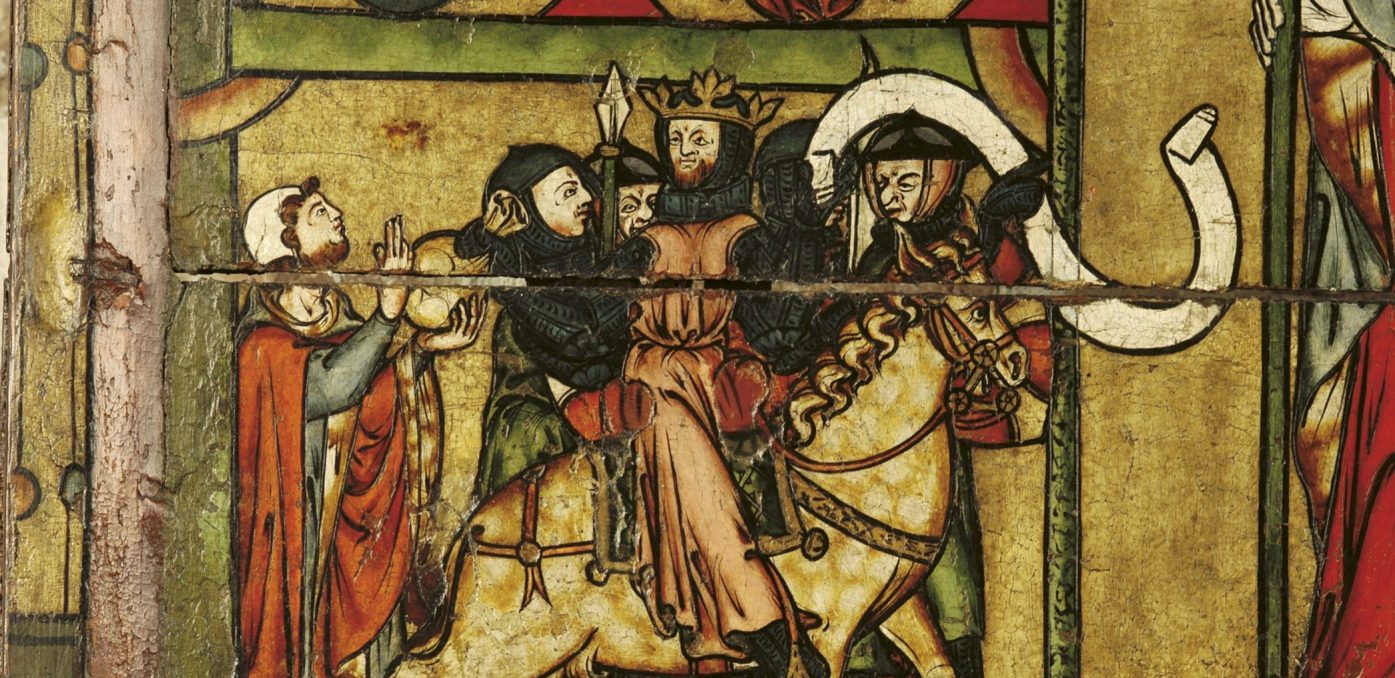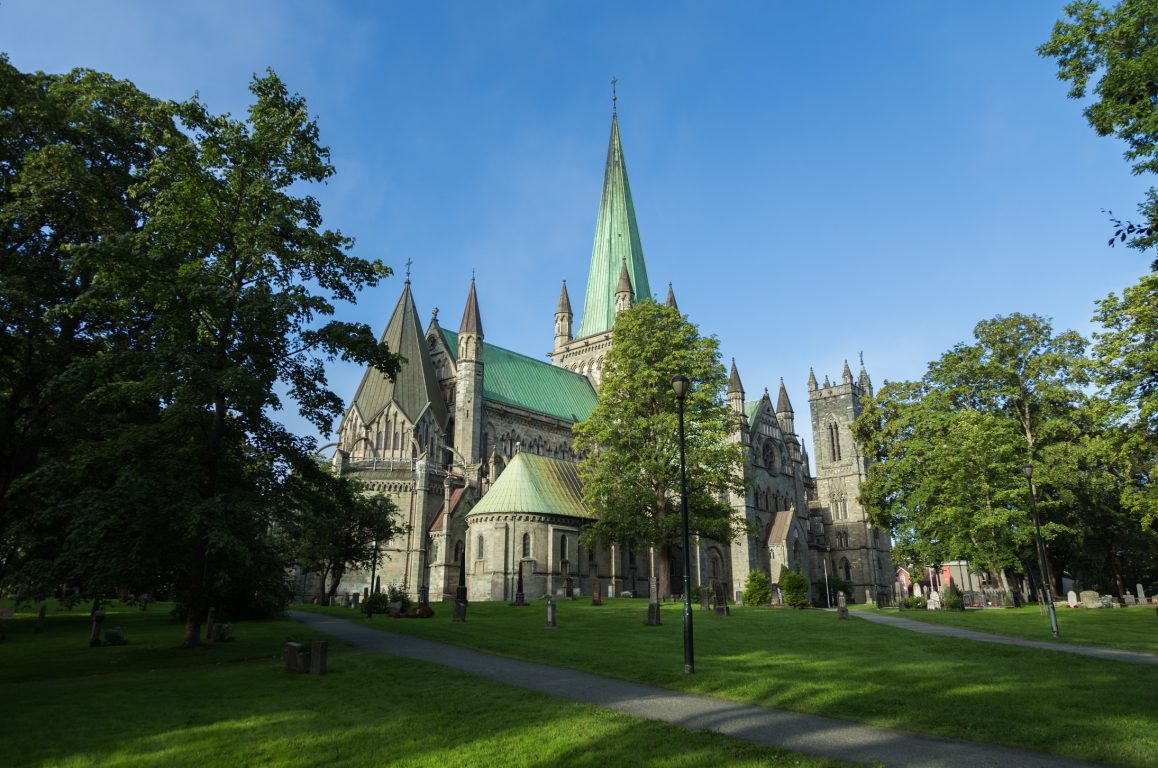The Viking King and Saint Olav
Saint Olav's shrine in Nidaros Cathedral has been the most important pilgrimage site in the Nordic countries since the canonization in 1031. The Norwegian Saint King retained his status as the most esteemed Nordic Saint throughout the Middle Ages.

The right to inherit the Norwegian throne
The Norwegian king Olav II Haraldsson was born in 995 as son of the Viking king Harald Grenske who was the great grandson of Harald Fairhair. This was highly advantageous in a time when the country had several small kings and earls, because direct lineage from Harald Fairhair gave the right to inherit the Norwegian throne.
A successful chieftain
Only 12 years old Olav was introduced to the life as a Viking at sea. His mother, Åsta, sent with him the experienced Viking, Rane, who became an important teacher for the young boy.
Olav became a successful Viking chief, who was in alliance with several of the rulers of Europe, but he also had dangerous enemies. Among his allied was king Ethelred II of England who at that time was in a severe conflict with king Svein of Denmark. King Olav tore down London Bridge, using his “longships”. King Ethelred got back his country and king Olav was richly rewarded.
Olav is baptized in Rouen
Another of king Olav’s allied was the Duke Richard II of Normandy. 19 years old Olav stayed in Rouen, France, for many months at the Duke’s court. Though Christianity had been introduced to many places in Norway and King Olav Haraldsson probably knew about this new faith, it was during his stay in Normandy that he was taught Christianity by the Duke’s own brother, Archbishop Robert of Rouen, and was baptized in Rouen 1014.
A king is elected
He came back to Norway with the vision and the call to unite his kingdom to become one Christian country under a new Christian legislation. During the year 1015/16 he was elected king all over Norway at the” things” which were the Viking’s form for democracy. Free men who owned their land were able to vote. In 1016 Olav was hailed as king at Oyrething in Trondheim. He was then the first to be elected as king over the whole country. During this procedure the king also introduced a Christian legislation, which was fully adopted in 1023 at Mosterthing.

Prosperity and resistance
The battle of Stiklestad
In 1030 king Olav had a dream which he interpreted as a call to go back home and fight for his country. He arrived at Stiklestad with a small army and was killed at a battle there. The St. Olav’s saga, written by the Islandic historian Snorre Sturlasson, tells about miracles that occurred at the battle scene and later around the king’s grave in Trondheim.
People started to think that he was a holy man and one year later they convinced the bishop to open the grave. The king looked like he had been sleeping, his hair and nails had grown, his skin was fresh and a wonderful fragrance came up from the coffin. The king was declared a martyr and a saint in the year 1031. The relics were placed in the church and the pilgrimages to the holy king’s relics started immediately.

Nidaros Cathedral - the burial church of St. Olav
In 1153 the archbishopric of Nidaros was established by the Pope and the first archbishop, Øystein, started the building of the magnificent cathedral of Nidaros in Trondheim. Archbishop Øystein had studied in France and England and was familiar with the architecture of the European cathedrals. He brought both the knowledge and stonemasons with him to Trondheim. Archbishop Øystein was an important person for the veneration of St. Olav. He wrote a book about the life and miracles of St. Olav: “Passio et miracula beati Olavi“. This book was spread and copied all over Northern Europe and we can still find some copies, among them in libraries in Douai, France and Oxford, England.
